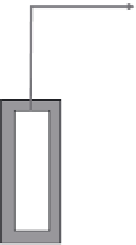Environmental Engineering Reference
In-Depth Information
ORWARE (Sweden), and EASEWASTE (Environmental Assessment of Solid Waste Systems
and Technologies (Denmark), the last three are life cycle assessment models, whereas DST
considers water BOD and IWM includes reduced air emissions only. Their case study
comparison indicated that different assumptions, wastes, and local conditions can greatly
affect the obtained results. In addition, DST and IWM did not provide suficient informa-
tion to allow decision support for organic waste land application (Hansen et al., 2006).
The integrated manure management system shown in Figure 6.10 takes advantage of the
less severe impact of the anaerobic digestion process for primary treatment and subsequent
composting for inal treatment and disposal. As shown in the diagram, combined wastes
(green and manure) are sent to the anaerobic digestion system for treatment. This reduces
the VS content. The digestate is then removed from the digestors for solid/liquid separation
by screw press or other means. The solids are sent for composting, whereas the liquid is sent
for wastewater treatment. After biological treatment (wetlands or a reactor if space is limited),
the water can be stored and reused as required or spread on the land surface. The remaining
solids content is ideal for composting. The requirements for oxygen will be decreased due to
the previous anaerobic digestion step. This step also requires energy that can be produced by
the anaerobic digestion process. The resulting compost would be high grade compost full of
nutrients with adequate pathogen reduction. The application rates to the soil would need to be
based on N and P crop requirements to avoid excess soil nutrients (Cooperbrand et al., 2002).
Land spreading of manure creates numerous environmental problems in the agroeco-
system. Manure treatment by anaerobic digestion is a step in the direction toward sus-
tainable agricultural practice since it is a renewable source of energy. The main beneits
are shown in schematic form in Figure 6.11. Manure treatment enables farmers to reduce
(a) pathogens, odor, N
2
O, and carbon dioxide emissions and (b) air, soil, and groundwater
pollution caused by manure spreading. As anaerobic digestion is not a complete solution,
an integrated one including composting to produce a soil conditioner will be required to
ensure complete management of all aspects of manure treatment, as shown in Figure 6.12.
Biogas for fuel or electricity
Manure from
holding tank
Anaerobic
digestion
Separator
Solids for
composting
Liquid treated and recycled or
sprayed on field
FIGURE 6.10
Schematic diagram showing low sequence for sustainable management of manure.
















Search WWH ::

Custom Search